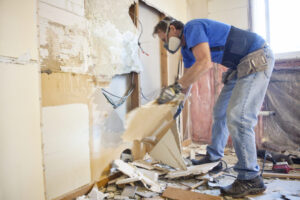Older homes possess a unique charm and character, but they can also harbor hidden dangers, one of which is asbestos insulation. Before the health risks of asbestos were widely known, this naturally occurring mineral was commonly used in various construction materials. Insulation like vermiculite in attic spaces is one of them. In this short blog post, we’ll explore the presence of asbestos insulation materials in older homes, the potential risks they pose, and what homeowners should know.
Asbestos in Insulation: A Brief Overview
Asbestos insulation materials were popular in residential construction from the early 20th century until the 1970s. These materials were valued for their heat-resistant properties, making them ideal for insulating homes and buildings. However, the health risks associated with asbestos exposure were not fully understood at the time.
The Risks of Asbestos Insulation
Insulation materials containing asbestos pose a significant health risk when such materials deteriorate or are disturbed during renovations, repairs, or even through everyday wear and tear. Asbestos fibers can become airborne and, when inhaled, may lead to serious health conditions, including:
- Asbestosis: A chronic lung condition caused by the inhalation of asbestos fibers, leading to scarring of the lung tissue and breathing difficulties.
- Lung Cancer: Asbestos exposure increases the risk of developing lung cancer, especially in individuals who smoke.
- Mesothelioma: A rare and aggressive form of cancer that primarily affects the lining of the lungs, abdomen, or heart. Mesothelioma is strongly linked to asbestos exposure.
What Should Homeowners Do?
If you live in an older home, especially one constructed before the 1980s, it’s crucial to be aware of the potential presence of asbestos insulation materials. Here are some steps you can take:
- Asbestos Inspection: Consider hiring a licensed asbestos inspector to assess your home for asbestos-containing materials, including various types of insulation materials. They can provide guidance on safe removal or encapsulation. Environmental IQ’s consulting team can assist you with these inspections upon request.
- Safe Renovations: If you plan to renovate or remodel your older home, have it inspected for asbestos first.
- Regular Maintenance: Perform regular maintenance to monitor the condition of your home. If you notice signs of deterioration of any construction materials, or if there is a potential exposure to insulation materials then avoid disturbing it and consult with professionals.
- Educate Yourself: Learn about the risks of asbestos exposure and the proper procedures for handling and removing asbestos materials. Knowledge is your best defense!
Conclusion
Asbestos-containing materials in older homes may be a hidden hazard, but with awareness and proper precautions, homeowners can protect themselves and their families. If you suspect the presence of any asbestos-containing material, never attempt to remove it yourself. Instead, seek the expertise of professionals trained in asbestos consulting and abatement to ensure the safe handling and removal of these materials. By taking these steps, you can maintain the charm of your older home while safeguarding your health and well-being.
Environmental IQ


